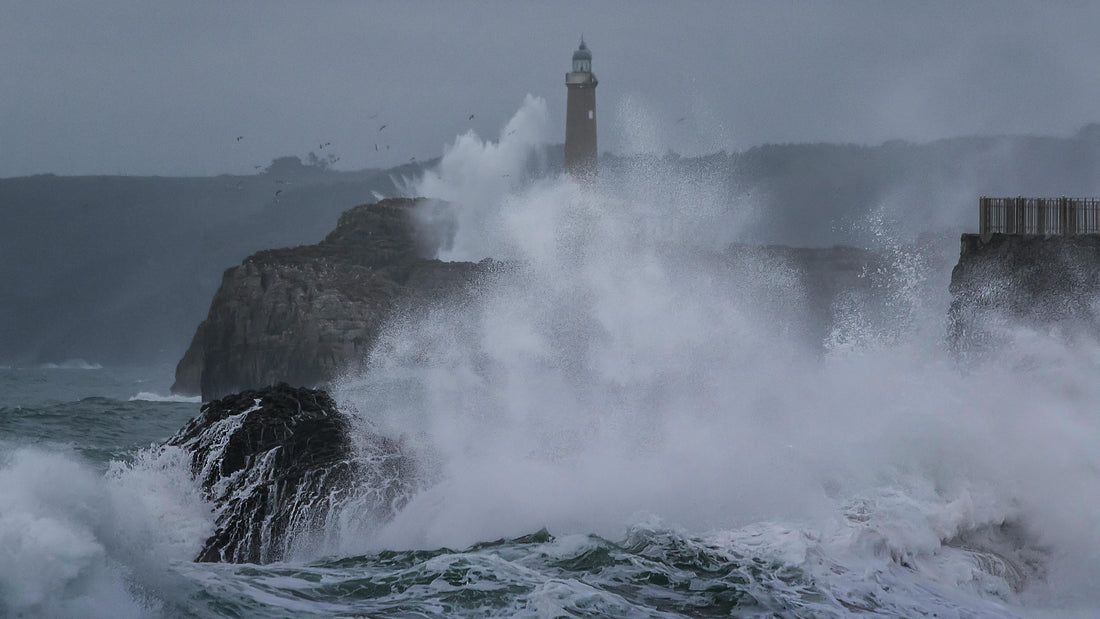
EU Survival Kits: What Recent Blackouts Teach Us About Preparedness
Share
At first, Alan thought it was just a regular power cut. It was a windy night in Ireland, and storms were common in his small town. He lit a candle, made a joke about it to his kids, and waited for the lights to come back on.
But they didn’t.
Four Days Without Electricity
Alan lives in County Clare, on the west coast of Ireland. He’s a primary school teacher, a father of two, and not the kind of person who thinks about “emergency kits.” That changed last winter.
When Storm Isha hit, it knocked out power to thousands of homes. Alan’s house went dark on a Thursday evening. By Sunday night, it still hadn’t come back.
Day 1: “It’ll Be Back Soon”
The first night was manageable. Alan used his phone as a torch. The family huddled under blankets. They ate cold food from the fridge before it spoiled. The mood was still light — it felt like a little adventure.
Day 2: Water Stops, Worry Starts
By the next afternoon, the taps ran dry. Their water supply had stopped. The heating was off. The kids were cold. Alan's phone died, and without power, there was no way to charge it. No news updates. No way to call for help.
The shops in town were closed. The petrol station was shut. People were starting to panic. Without light, power, or clean water, the town felt like it was slipping back in time.
Day 3: Neighbours Come Together
Alan and his neighbours decided to check in on each other. One family had a gas stove and shared hot soup. Another had an old camping lantern. They brought buckets to a nearby stream for washing and flushing toilets. Everyone helped where they could.
"We held it together because we had each other," Alan said later. "But it was close."
Day 4: Still in the Dark
By Day 4, people were tired. Cold. Thirsty. The kids were scared. Alan admits he felt helpless. If the power hadn’t come back late that night, he doesn’t know what they would’ve done.
The Lessons Alan Learned: Why we all need a EU Survival Kit
After the blackout, Alan made a promise: never again would he be unprepared. He started reading about emergency kits — not the extreme kind, just the basics. Something to get through the first 72 hours of a crisis.
1. You Can’t Wait Until It Happens
By the time disaster strikes, it’s too late. Shops are closed. Supplies are gone. You have to prepare before, not after.
2. The Big Three: Water, Warmth, Light
Alan says the scariest thing wasn’t the dark. It was the silence. No water from the tap. No way to stay warm. No torch. These three things — water, warmth, and light — became precious.
3. 72 Hours Is Not a Long Time — But It Can Feel Like Forever
Experts recommend having enough supplies to last three days. That’s 72 hours. Enough to get through most emergencies until help arrives or power returns. It’s not about living off-grid. It’s about having what you need when things break down.
What Should Be in an EU Survival Kit?
Here’s a simple list of what Alan now keeps in his kit:
✅ Water
At least 6 litres per person (2L per day). For more information also see our post about Emergency Water Preparedness
✅ Emergency Food
Canned goods, dried fruit, energy bars — food that doesn’t need cooking. Frozen Food won't save you.
✅ Torch & Batteries
Or a hand-crank torch. Bonus: headlamps leave your hands free.
✅ Power Bank
Keep it charged. Solar chargers can help too.
✅ First Aid Kit
Bandages, antiseptic, painkillers, and any regular medications.
✅ Emergency Blanket
They’re cheap, small, and help keep in body heat.
✅ Basic Hygiene Supplies
Wipes, sanitizer, tissues, and rubbish bags.
✅ Radio
A battery-powered or wind-up radio can give you news when phones can’t; like this Emergency Radio.
Alan’s Message: Don’t Wait
Alan didn’t call himself a prepper. He still doesn’t. He’s just someone who lived through a blackout and saw how fast things can change.
"You think it’ll never happen where you live," he said. "Until it does."
Today, Alan has a 72-hour survival kit in his hallway closet. He bought one for his elderly parents too. Just in case.
Be Ready. Not Scared. Get your EU Survival Kit now.
Emergencies don’t wait. Power grids fail. Water systems stop. And help can take time to arrive.
Having a 72-hour EU Survival Kit won’t make you paranoid — it’ll make you prepared.
👉 Get your EU Survival Kit today
Peace of mind fits in a backpack. Don’t wait for the next blackout to find that out the hard way.


